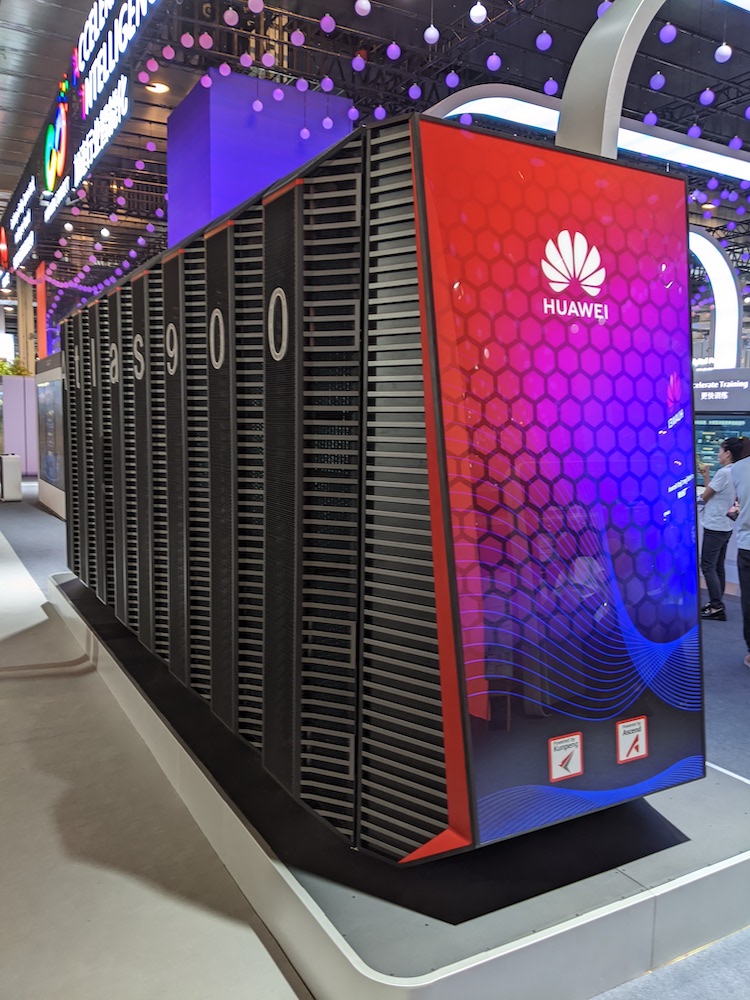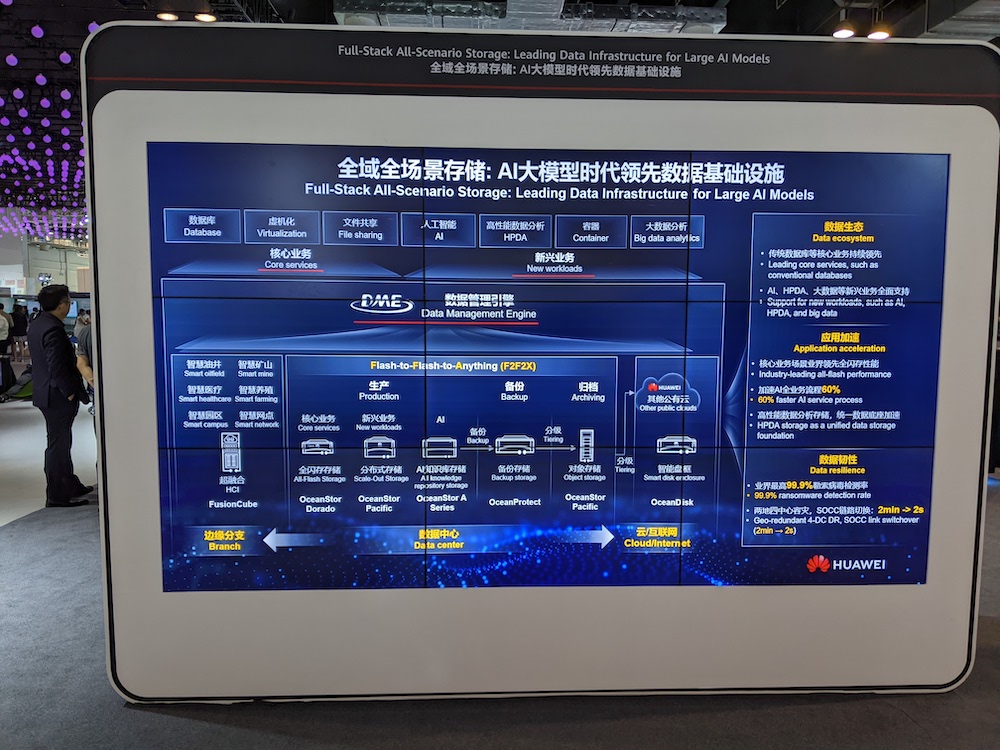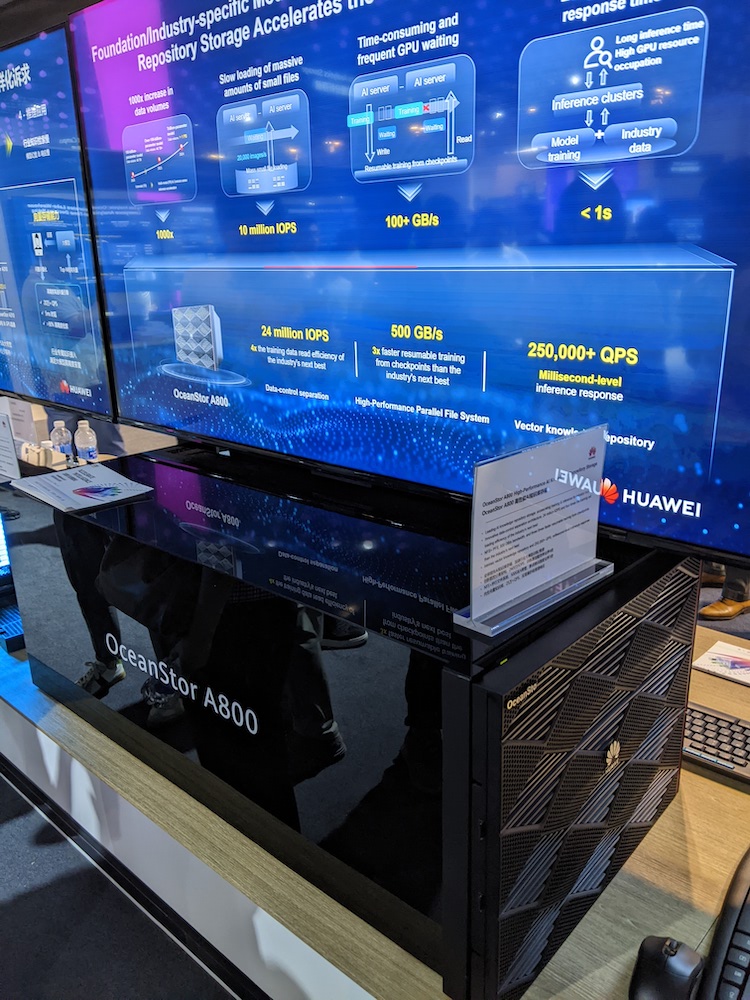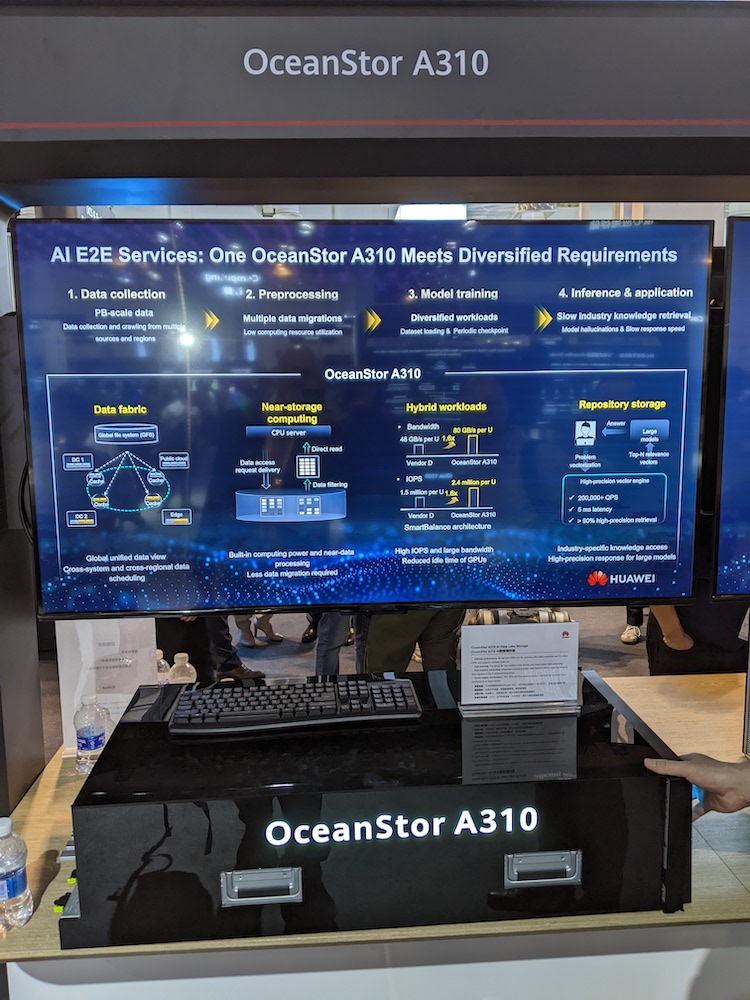Recap of Huawei Connect 2023
AI and storage interesting topics but integration even more compelling, new de-dupe backup appliance OceanProtect
By Philippe Nicolas | October 2, 2023 at 2:02 pmThe recent Huawei Connect 2023 expo and conference organized recently in Shanghai, China, was once again an invitation to realize the growing footprint of the company in various information technology domains.
The organizer confirmed around 20,000 attendees less than past records before Covid with 30,000 but with a clear wish to come back to this level in the coming years. We have seen various sponsors, with a large proportion of Chinese ones, but this event is above all a celebration of Huawei power.
As a global IT leader, it’s worth understanding the weight of the firm. The company generated $90.8 billion, a bit below what they did in the past, with $40.8 billion for its carrier business, $30.8 billion for consumer and $19.2 billion for enterprise. The other impressive number is the number of employees and its R&D ratio, so far 207,000 work for the company WW with 55% in R&D.
The main theme of the conference was about “Accelerating Intelligence” surfing on the 3 phases – Industrial Society → Information Society → Intelligent Society – that touch all aspects of our lives. AI is paramount at the company with various solutions, developments and approaches. The company thinks that AI belongs to the infrastructure and should feed “plugged” applications to address specific use cases supporting diverse workloads. In other words, AI accelerates the “Verticalization” of IT solutions and it is illustrated by Huawei Pangu AI models available for several domains. At the show, the company unveiled 9 new vertical solutions, many of them already adopted by various customers and partners. And the firm’s goal is to be considered clearly as a leader in that domain that can be summarized as the HPDA, high performance, big data analytics and AI, pretty large in fact, a very demanding IT environment.

Clearly the intelligence effort must address challenges in data, computing, algorithm and applications. And to sustain this trajectory, engineering teams develop CPU, NPU, a GPU-like dedicated to AI without the graphic part, N means Neural, networking and communications and finally storage.
At the conference, executives launched Atlas 900 Super Cluster, a large modular compute cluster dedicated to AI. It is based on Kunpeng CPU and Ascend NPU instantiated on a 2 layers non-oversubscription networking. The maximum size supports 2250 nodes with 18,000 NPUs. Each configuration of 8 cabinets (8 NPU per node) delivers 800GB/s bus, uses 544TB of memory with 200 PFLOPS @FP16. The average industry configuration to deliver similar performance is offered with 16 cabinets. Density is key here.

AI and storage are 2 interesting topics but their integration is even more compelling. The first aspect is AI storage or storage for AI with special requirements from AI services to be connected to a fast network, high throughput and low latency storage entities.
Supporting Nvidia GDS, Huawei is able to offer a parallel file system but also NFS over RDMA offering options and the best of both worlds.
The second aspect is AI in storage and how storage and data management solutions can benefit from new algorithms and data processing techniques to extend and deliver new value. Use cases are very wide and we see this in pattern recognition, content indexing, data placement policies, cyber threat, etc. It gives a new dimension to these data services. The image below shows the wide Huawei offering in the data storage. As you can see it covers multiple domains.

This compute entity, the Atlas 900 Super Cluster, is connected to the new OceanStor A800, a 8U chassis delivering 500GB/s of throughput and 24 million IO/s coupled with the company’s parallel file system OceanFS and a vector database. This model was announced but complete specs are not yet available and should be GA in Q1/24.

Last July, the team announced the A310 with already high performance specs and performance numbers: 5U with 8 nodes per chassis, 400GB/s, 12 million IO/s, 96 NVMe SSD for almost 3PB per chassis. A maximum of 4,096 chassis can be connected together. This A310 is also integrated with the FusionCube A3000, a designed cabinet ready for the market.

These 2 examples invite us to mention the 2 main storage products families Dorado and Pacific. Dorado is an all flash solution working more as a scale-up product and Pacific line supports hybrid but also full flash and is positioned as the scale-out storage company solutions. Both are very rich in terms of data services and operate as unified storage products in terms of access methods supporting block, file, object and even HDFS.
We understand that these platforms serve to consolidate workloads but also to integrate various workflows to swallow data, this is illustrated by the HDFS support. The idea would be to expose various interfaces to distinct applications belonging to a data processing pipeline. All these are a result of internal developments and use very little open source modules. Dorado uses MinIO to expose S3 for instance if users require such an interface on this high performance product.
On the NVMe side, the engineering team has released NVMe/FC and RoCE v2 and plans to add TCP next year. We also learned that the Chinese vendor selects some NAND vendors but develops its own SSD and card wishing to be independent in that domain. On the data protection aspect, these solutions implement triple parity RAID and more globally erasure coding with 24 units able to support assemblies like 20+4 or 22+2 depending on the use case.
Beyond Dorado and Pacific product lines, the storage team also has released a secondary solution named OceanProtect, an advanced dedupe backup appliance that can be compared easily with brands we have in mind such Dell PowerProtect, ExaGrid, HPE StorOnce, NEC HYDRAstor or Quantum DXi to name a few. This device can be clustered with up to 32 elements and can deliver up to 72:1 data reduction ratio. The Pacific line also offers an Archive model for long term data preservation and supports cloud extensions.
Huawei has selected Atempo for data management with special functions like migration and others. It has also developed Data Management Engine that can be coupled also with the Huawei Global File System to offer a global, distributed, multi-site approach, of course independent of NAS, file servers and object storage instances. Today GFS is limited to 12 sites and targets disaster recovery today. Other modes will be released in 2024.
We also learned that this group has developed a new backup software dedicated to distributed applications, largely adopted in China, as Chinese enterprises rely a lot on their own distributed application development. This approach uses an agent-based model controlled by a central server connected to a secondary storage target.
We also saw a cyber threat protection appliance targeting mid-range users and SMB, it is named OceanCyber Data Security Appliance.
The firm also displayed the OceanDisk Smart Disk Enclosure serving as a disk extension.
The company has invested a lot in containers and Kubernetes with classic support of CSI but also some interesting extensions with CDR for Container Disaster Recovery and CSM for Container Storage Monitor. This team promotes a hyper metro model based on an active/active NAS approach to facilitate a zero RTO.
Huawei cloud was also a key topic with the 8.3 release with a new architecture, solutions and tools again to promote AI in all flavors. The company has developed GaussDB, a highly scalable distributed database based on PostgreSQL, that replaces Oracle at Huawei.
What is interesting is the competition identified by the company in each domain that positions itself vs. top vendors. We understand that Huawei is obsessed with performance with a clear goal to beat records. We also notice that the firm understands the power of software but delivers its solutions essentially with hardware products especially in the storage segment.
Spending a few days in China, we measured significant progress made by the population, cities and other companies with modern tools and solutions. In other words, they jumped into the modern era very fast and they contribute to it very actively.














 Subscribe to our free daily newsletter
Subscribe to our free daily newsletter

